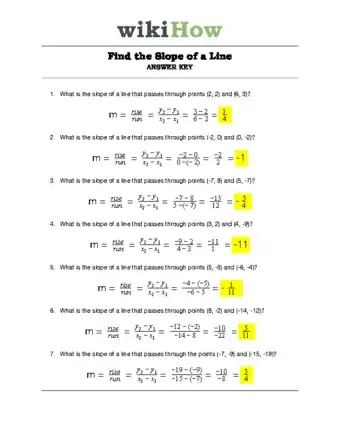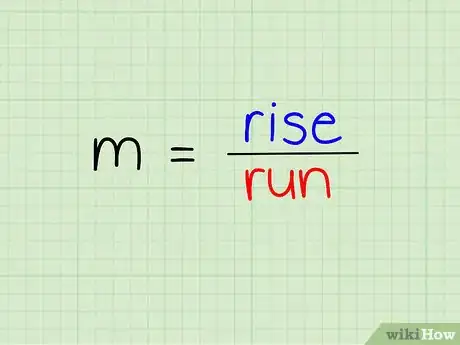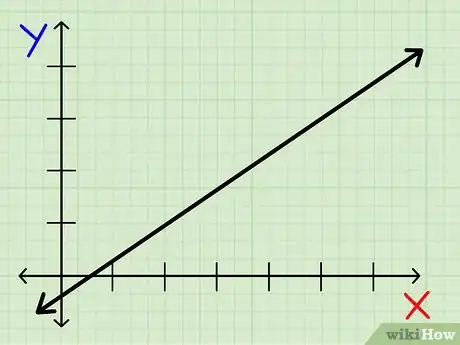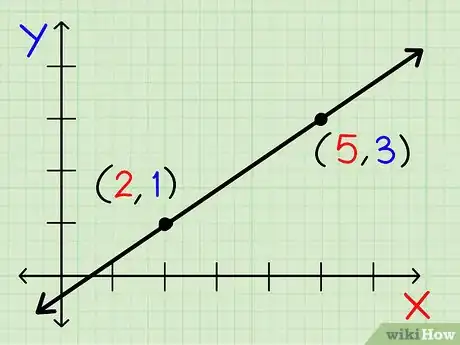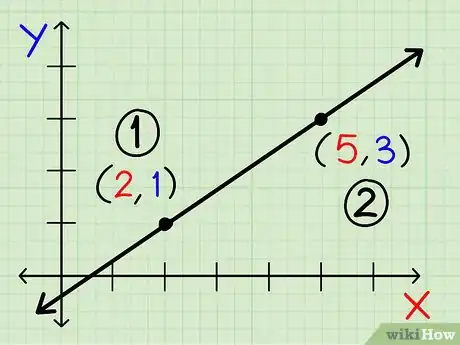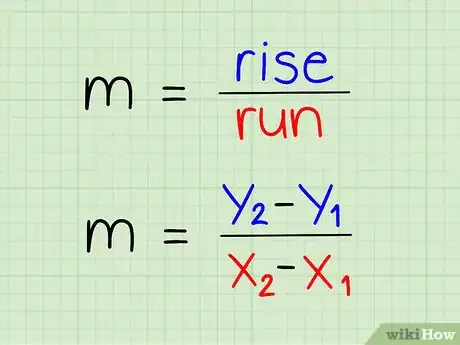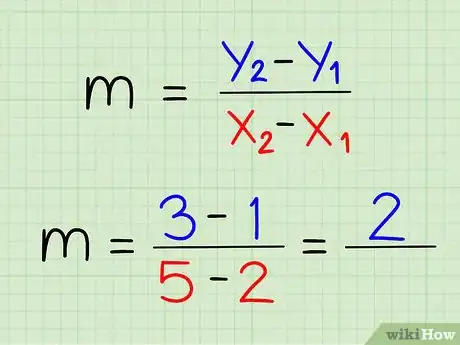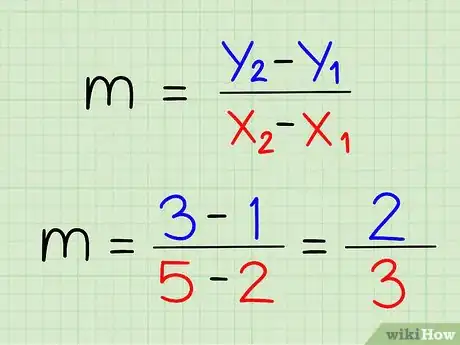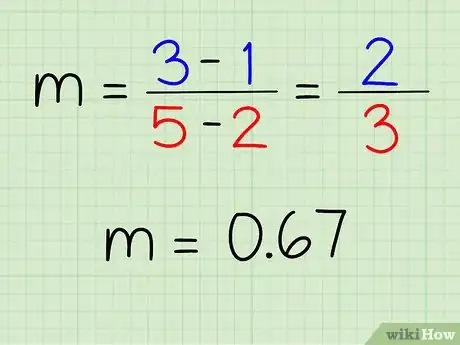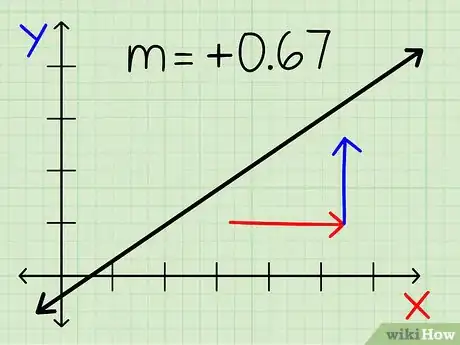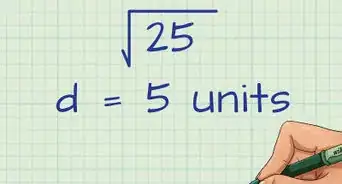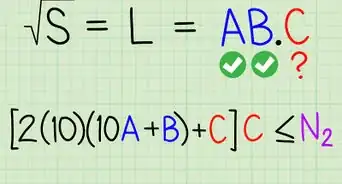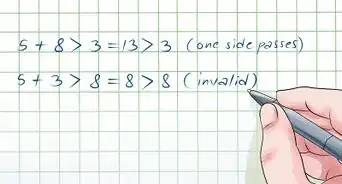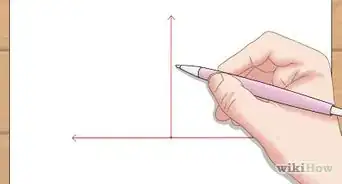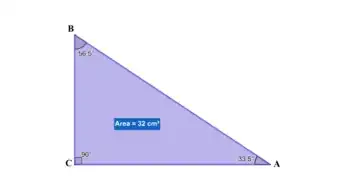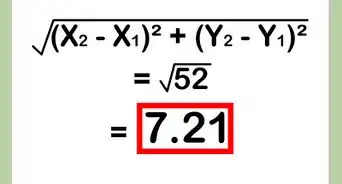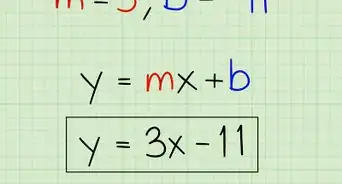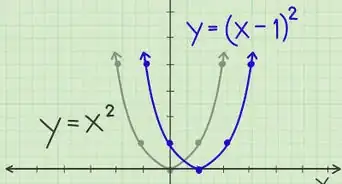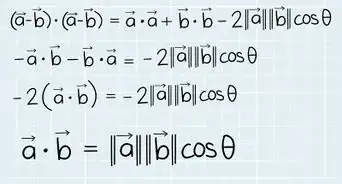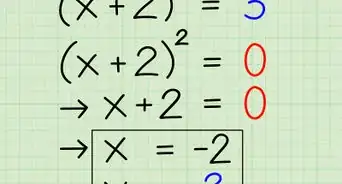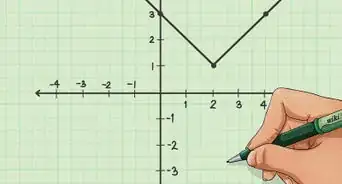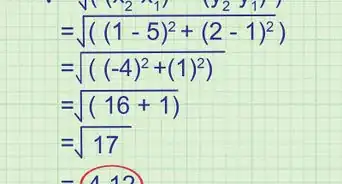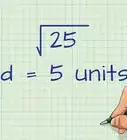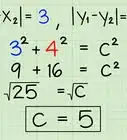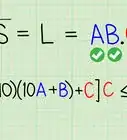wikiHow is a “wiki,” similar to Wikipedia, which means that many of our articles are co-written by multiple authors. To create this article, 44 people, some anonymous, worked to edit and improve it over time.
This article has been viewed 416,043 times.
Learn more...
Lines are everywhere in English, whether you are taking Algebra I, Geometry, or Algebra II. If you know how to find the slope of a line,[1] many things become clearer to you, like whether two lines are parallel or perpendicular, where they will intersect, and many other concepts. Finding the slope of a line is actually pretty easy. Read on for some easy steps you can take to learn how to find the slope of a line.
Steps
Practice Problems
Solving for Slope
-
1Get a line of which you want to know the slope. Make sure that the line is straight. You can't find the slope of a line that isn't straight.
-
2Pick any two coordinates that the line goes through. Coordinates are the x and y points written as (x, y). It doesn't matter which points you pick, as long as they're different points on the same line.[3]
-
3Pick which point's coordinates are dominant in your equation. It doesn't matter which one you pick, as long as it stays the same throughout the calculation. The dominant coordinates will be x1 and y1. The other coordinates will be x2 and y2.
-
4Set up the equation using the y-coordinates on top and the x-coordinates on bottom.[4]
-
5Subtract the two y-coordinates from one another.
-
6Subtract the two x-coordinates from one another.
-
7Divide the y-coordinate's result with the x-coordinate's result. Reduce the number if at all possible.
-
8Double-check to see that your number makes sense.
- Lines that go up from left to right are always positive numbers, even if they're fractions.
- Lines that go down from left to right are always negative numbers, even if they're fractions.
Community Q&A
-
QuestionHow do I find slope of 2x - 4y = 20?
 DonaganTop AnswererRe-work the equation until y is isolated on one side. Then note the coefficient of the x term. That's the slope. In this example, we re-work the equation until we isolate y: y = x/2 - 5. The coefficient of x is ½, so the slope of the line is ½.
DonaganTop AnswererRe-work the equation until y is isolated on one side. Then note the coefficient of the x term. That's the slope. In this example, we re-work the equation until we isolate y: y = x/2 - 5. The coefficient of x is ½, so the slope of the line is ½. -
QuestionHow do I find the slope of a line y=9?
 Community AnswerFor all lines where y equals a constant and there is no x, the slope is 0.
Community AnswerFor all lines where y equals a constant and there is no x, the slope is 0. -
QuestionHow do I use a protractor and trigonometry to find slope of a line?
 DonaganTop AnswererThe slope of a line is a non-angular representation of the angle between the line and a horizontal line such as the x-axis. Use a protractor to measure that angle, and then convert the angle to a decimal or a fraction using a trig table. For example, if a protractor tells you that there is a 45° angle between the line and a horizontal line, a trig table will tell you that the tangent of 45° is 1, which is the line's slope. Most angles do not have such a simple tangent. For instance, a 30° angle has a tangent of 0.577. You could use that as the slope, or you could convert the decimal to a fraction, but in this case it would be a rather unwieldy fraction (577/1000 or 72/125).
DonaganTop AnswererThe slope of a line is a non-angular representation of the angle between the line and a horizontal line such as the x-axis. Use a protractor to measure that angle, and then convert the angle to a decimal or a fraction using a trig table. For example, if a protractor tells you that there is a 45° angle between the line and a horizontal line, a trig table will tell you that the tangent of 45° is 1, which is the line's slope. Most angles do not have such a simple tangent. For instance, a 30° angle has a tangent of 0.577. You could use that as the slope, or you could convert the decimal to a fraction, but in this case it would be a rather unwieldy fraction (577/1000 or 72/125).
Example
- Given: Line AB.
- Coordinates: A - (-2, 0) B - (0, -2)
- (y2-y1): -2-0=-2; Rise = -2
- (x2-x1): 0-(-2)=2; Run = 2
- Slope of Line AB = (Rise/Run) = -1.
Warnings
- Do not confuse the Slope Formula with any other formula, like: Distance Formula, Equation of a Line or Line Formula, or Midpoint Formula.⧼thumbs_response⧽
Things You'll Need
- Graph paper (possibly).
- A coordinate plane, or a line with two given coordinates.
- The Slope Formula.
- Pencil and paper,a ruler, a calculator, or just your mind.
- Line(s).
- x-coordinates.
- y-coordinates.
References
- ↑ https://www.mathopenref.com/coordslope.html
- ↑ http://mathforum.org/library/drmath/view/66624.html
- ↑ https://www.mathwarehouse.com/algebra/linear_equation/slope-of-a-line.php
- ↑ http://cls.syr.edu/mathtuneup/grapha/Unit4/Unit4a.html
- ↑ https://www.mathsisfun.com/algebra/line-equation-point-slope.html
About This Article
In geometry, the slope of a line describes how steep the line is, as well as the direction it’s going—that is, whether the line is going up or down. To find the slope of a line, all you have to do is divide the rise of the line by its run. To get the rise and run, pick any two coordinates along the line. For instance, your first coordinate might be at 2 on the x axis and 4 on the y axis, while your second coordinate might be at 5 on the x axis and 7 on the y axis. Next, write a fraction with the difference between your two y coordinates on top—this is the rise—and the difference between the x coordinates on the bottom—that’s the run. In our example, the rise would be 7-4, while the run would be 5-2. This means the slope of the line would be 3/3, or 1. To figure out the direction of the line, check whether your slope is positive or negative. Lines that go up from left to right always have a positive slope, while lines that go down from left to right always have a negative slope. To figure out how steep the line is, look at the magnitude of the number. Whether it’s positive or negative, the greater the magnitude, the steeper the slope. For instance, a line with a slope of -7 is steeper than a line with a slope of -2. Similarly, a line with a slope of 15 is steeper than a line with a slope of 3. If you want to learn how to reduce the numbers in your slope, keep reading the article!

